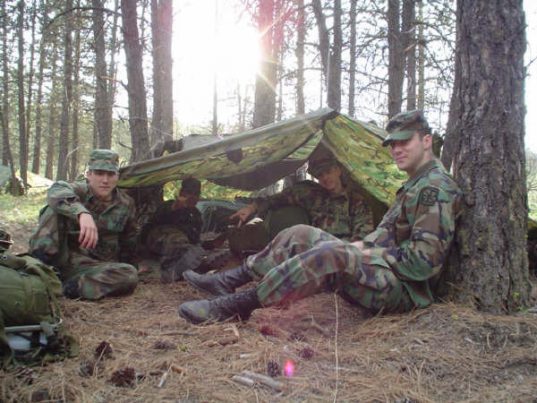The many survival uses of tarps when SHTF
Wednesday, September 19, 2018 by Zoey Sky
http://www.bugout.news/2018-09-19-survival-uses-of-tarps-when-shtf.html

A tarp is a versatile item, especially for SHTF situations. You can use it to make a shelter or to stay warm, among other things. (h/t to TheSurvivalistBlog.com)
Below are some of the various survival uses for tarp:
- A hammock, so you can sleep off of the ground when it’s full of insects, rocky, or wet.
- A rain poncho, so you can stay dry.
- As a solar still. Lightweight tarps can be used to make a solar still so you can distill water prior to drinking.
- A stretcher to carry someone who is injured, ill, or unconscious.
- A temporary hunting blind. Glue or attach leaves, sticks, and other foliage to camouflage the tarp from prey.
- A temporary shelter from sun and rain. (Related: How to build an emergency shelter with a tarp.)
- As a windbreak/protection from extreme wind.
- For extra protection over a makeshift tent or lean-to.
- To carry gear, make a temporary pack from a tarp. This is ideal if your backpack is broken or if you’re injured and you can’t wear your backpack properly.
- To catch rainwater. Dig a shallow hole and place the tarp inside. The tarp will act as a liner to keep dirt from getting into the rainwater.
- To collect and carry firewood or other foraged items. Once you’re done, tie up the four corners to create a makeshift bag. Sling it over your shoulder or attach it to a sturdy branch or walking stick.
- To collect water if you don’t have other containers.
- To keep firewood dry.
- To protect a campfire from rain or wind.
- To repair a leaky roof. Cover the damaged area with a heavy tarp until you can fix it properly.
- To signal for rescuers, spread a brightly colored tarp on the ground.
- To trap body heat. Use a breathable and water-resistant tarp as a temporary shelter or wrap it around your body. If you wrap tarp around yourself, make sure it has arctic flexibility to help prevent hypothermia.
- To trap small game. Place a sturdy tarp over a deep hole and camouflage it with sticks and leaves. Dig the hole on a known game trail or place bait directly over the tarp to attract prey.
Tarp qualities to consider
There are different kinds of tarp, and it can be made of canvas, cloth, mesh, polyester, polyethylene, or vinyl.
Consider the following before buying tarp:
- Arctic flexibility – Arctic flexibility refers to tarp’s capacity to bend and flex in cold and wet conditions. Tarps that aren’t breathable may be dangerous, especially if you use one to stay warm. Non-breathable tarps may cause hypothermia.
- Density – A denser tarp won’t let anything get through it. However, a mesh tarp is breathable and light. Even if some air can pass through, a mesh tarp can still protect you from debris and rain.
- Fire retardant – Fire retardant poly tarps can reflect heat. All tarps are at risk of burning, but fire retardant tarps are safer to use.
- Mildew resistance – This quality is important if you’re using the tarp in a damp or wet environment.
- Tear/puncture resistance – A tear-resistant tarp can help prevent rips and tears that might compromise the protection of your food or gear. Constant exposure to the elements can make many tarps more brittle. You can use duct tape to patch holes or rips in your tarp.
- UV protection – This is crucial if the tarp is often exposed to the elements. UV protection prevents tarp from becoming brittle when exposed to the sun or rain.
- Weight – Vinyl tarps are generally heavier, and they are suitable for heavy duty tasks where you need to lift or carry the tarp frequently. A lighter tarp may be a better choice if you’re building a temporary shelter or collecting water.
Consider bringing these other items when camping so you can use the tarp for various survival purposes:
- Cordage/paracord
- Duct tape/tarp tape
- An emergency Mylar blanket/a large wool blanket
- Replacement grommets
- Tent stakes
With your survival knowledge, some basic tools, and a tarp, you can survive the great outdoors even if SHTF.
Read more articles about the others uses of tarp when SHTF at Preparedness.news.
Sources include:
Tagged Under: Tags: bug in, bug out, bugout bag, Collapse, disaster, emergencies, Gear, how-to, multipurpose survival tools, off grid, preparedness, prepper, prepping, self sufficiency, self-reliance, SHTF, survival, survival gear, survival skills, survival supplies, Survival Tips, survivalist, sustainable living, tarp, tarpaulin

